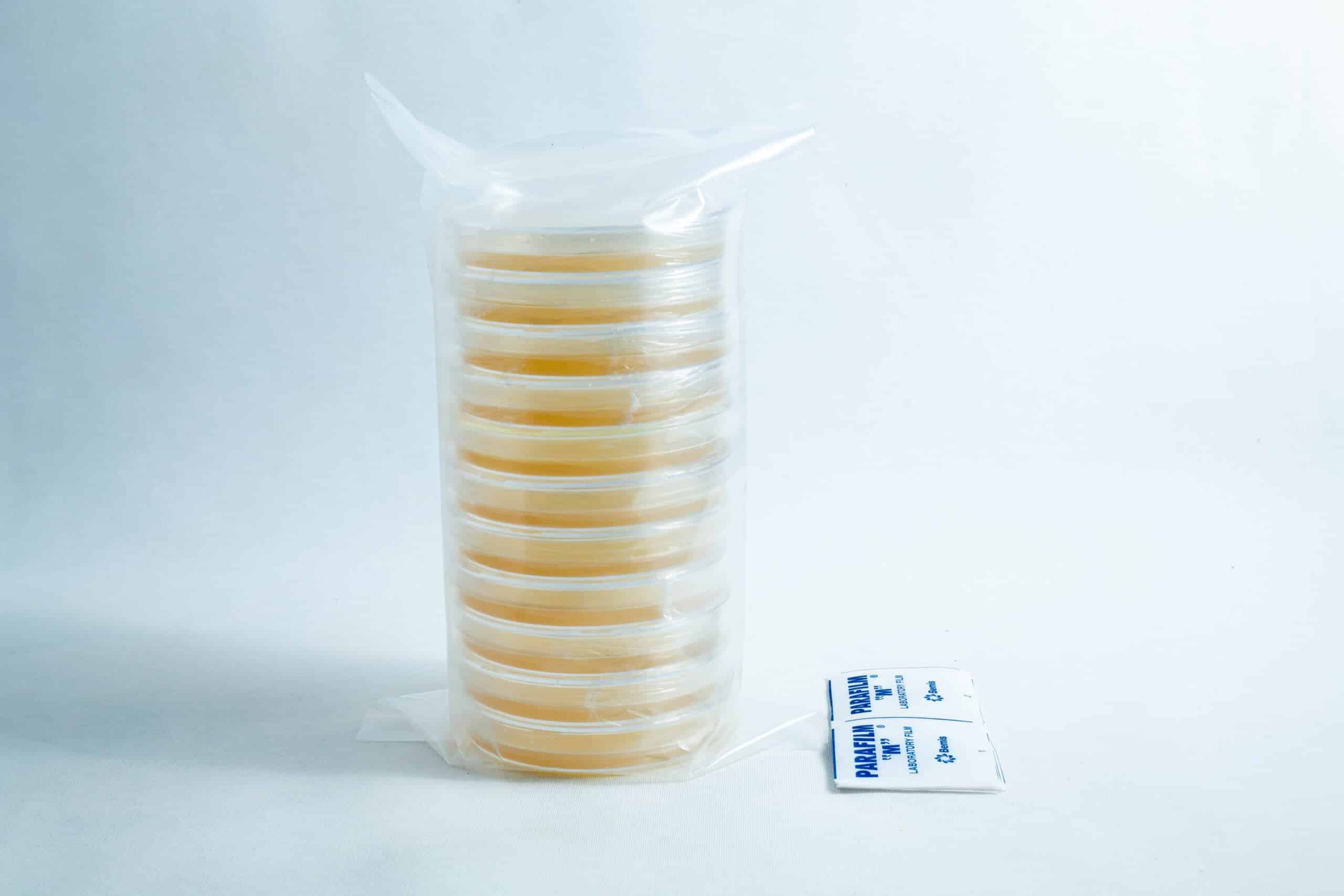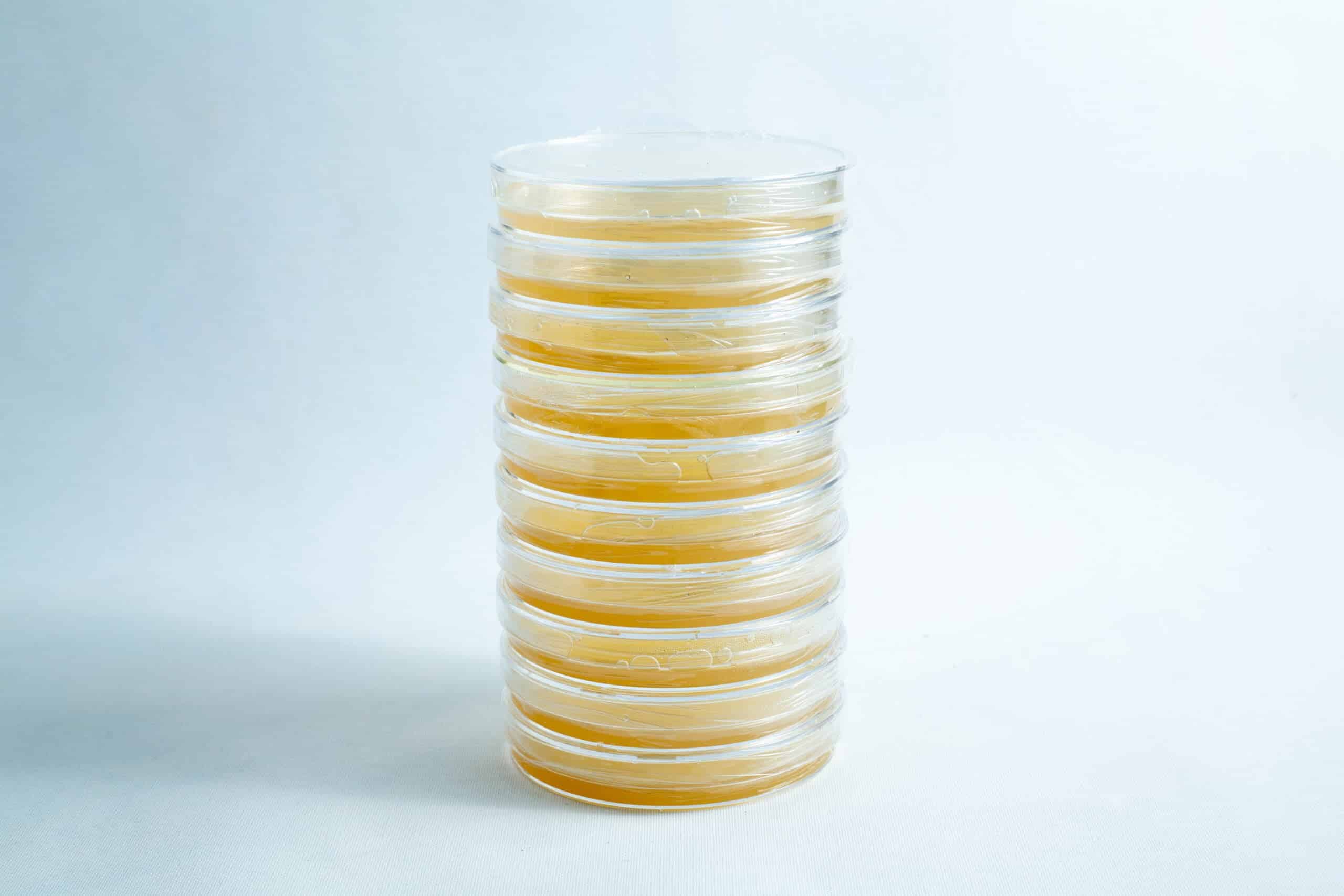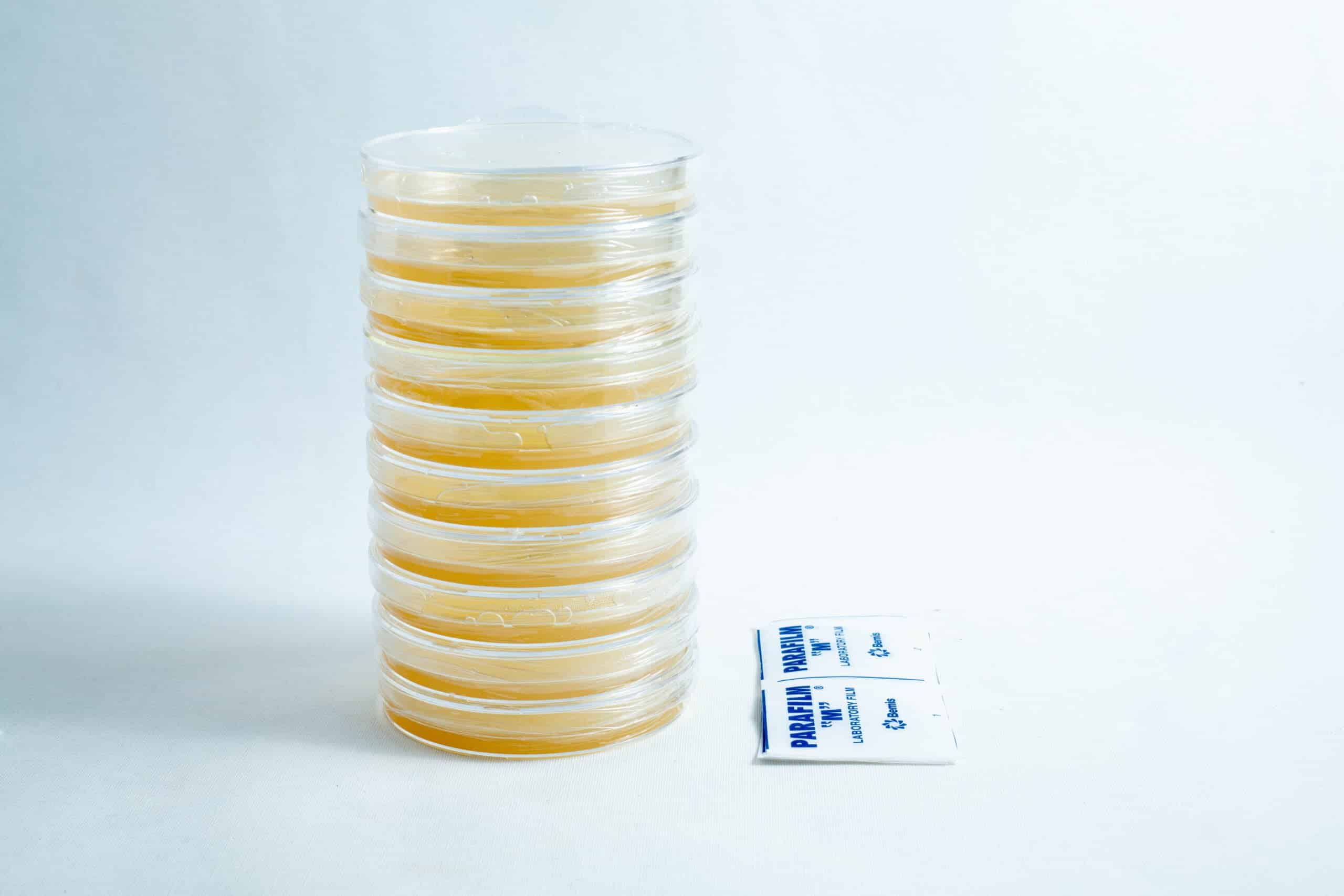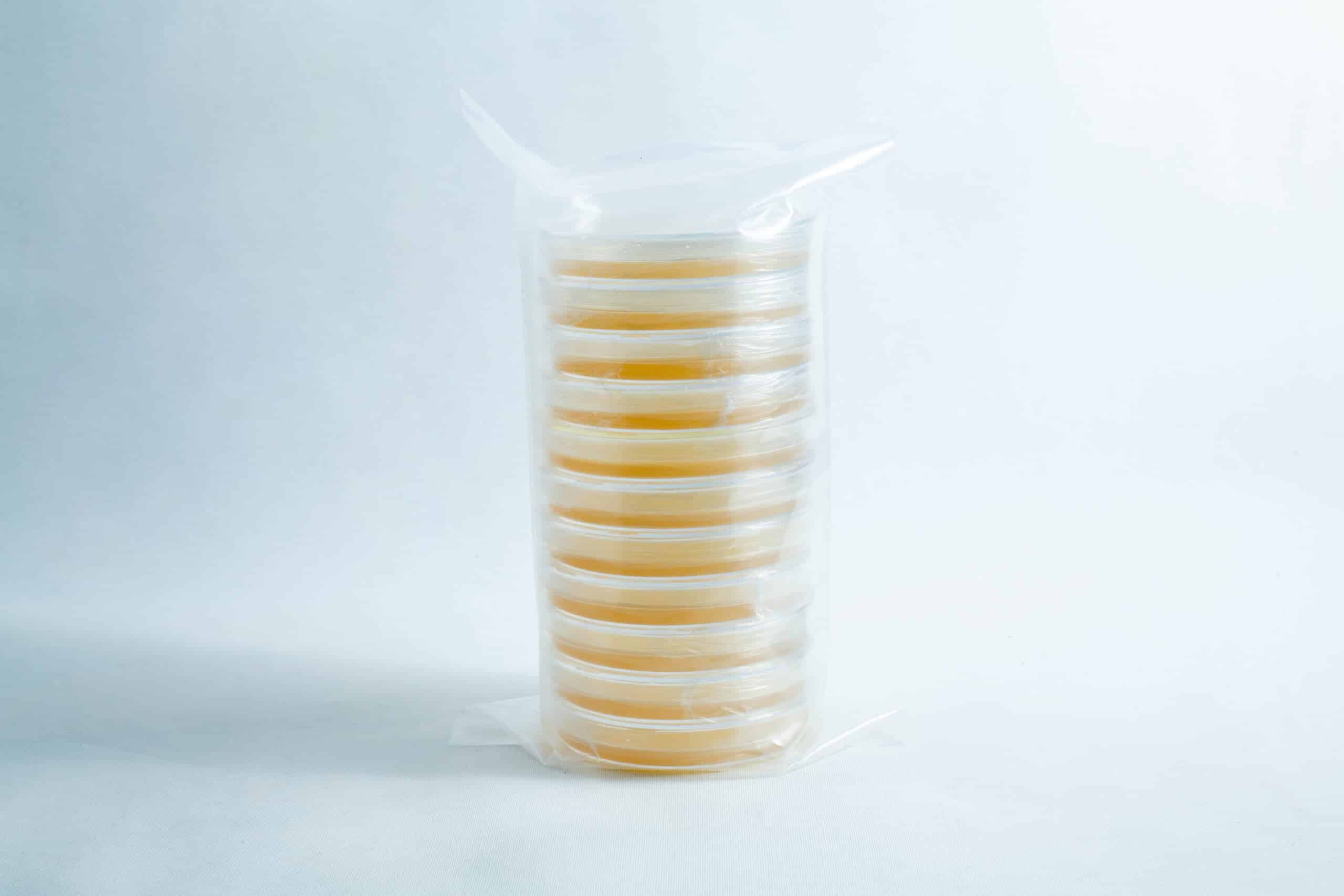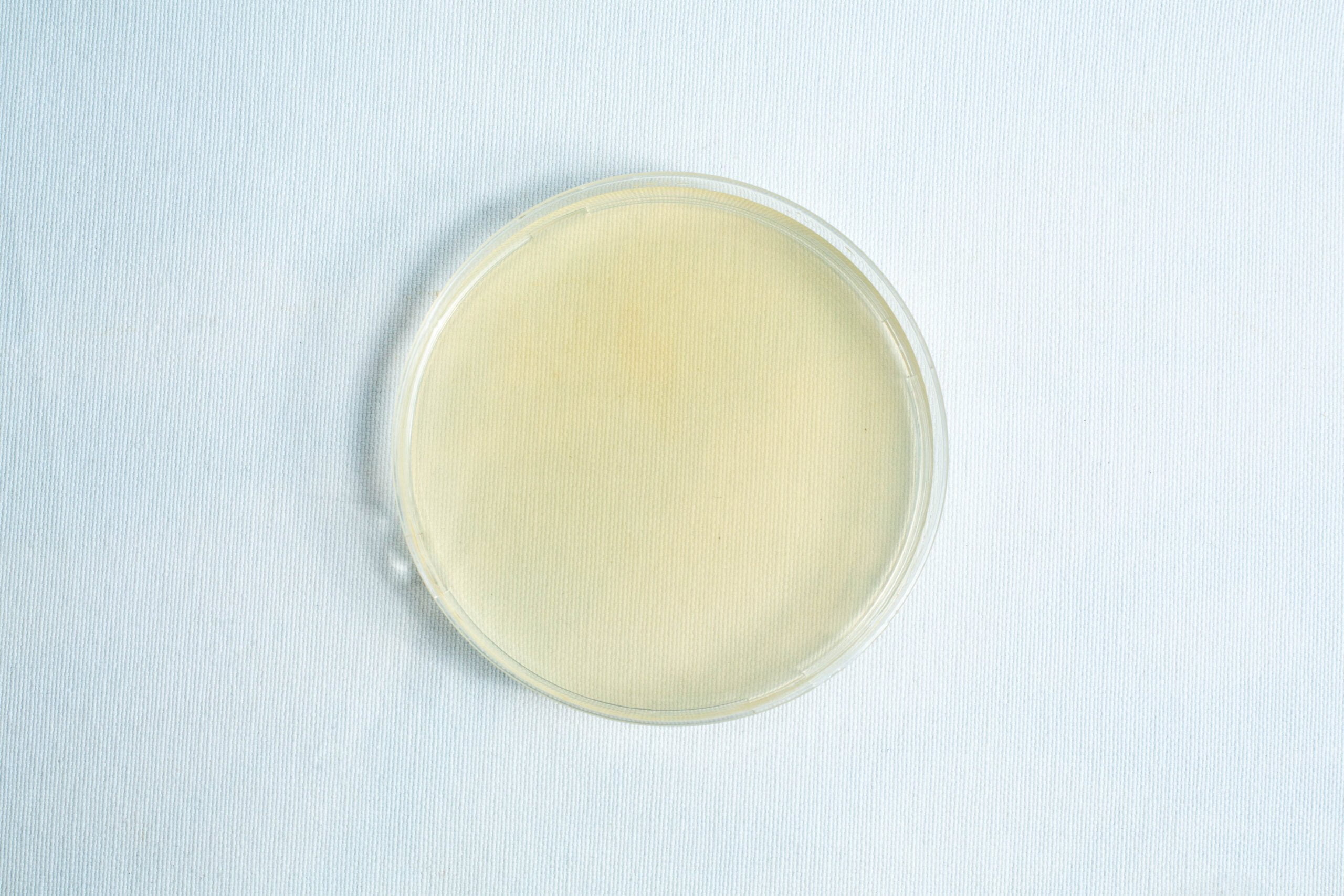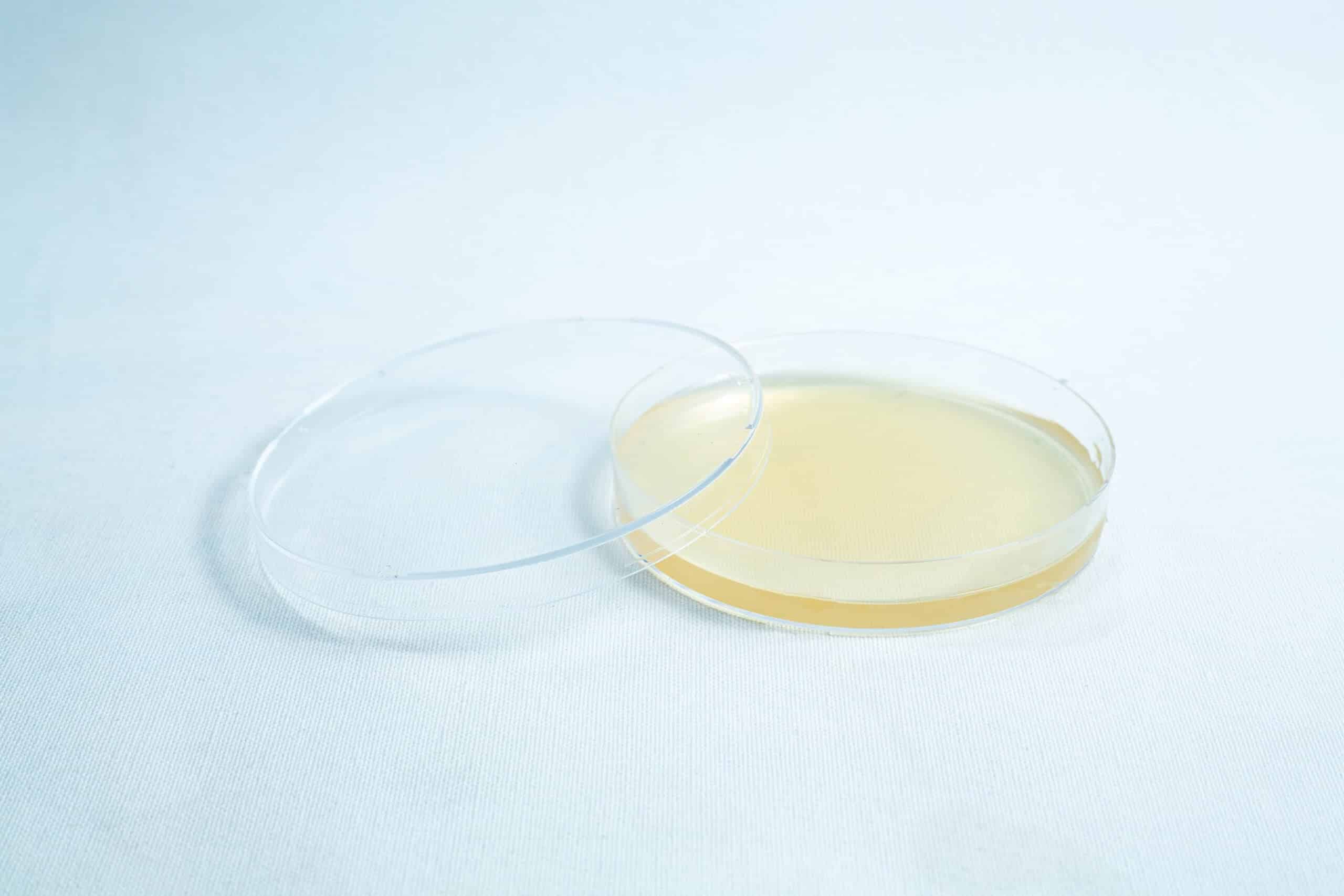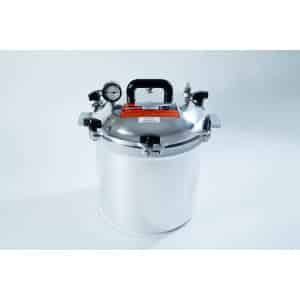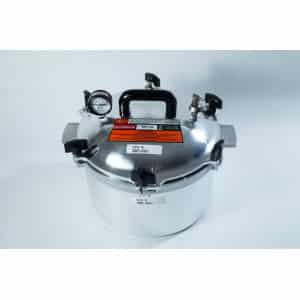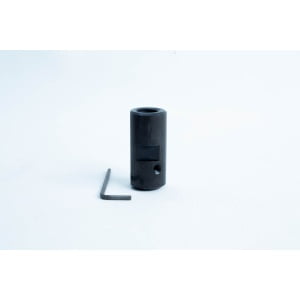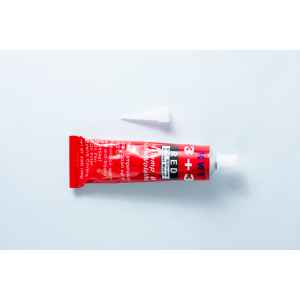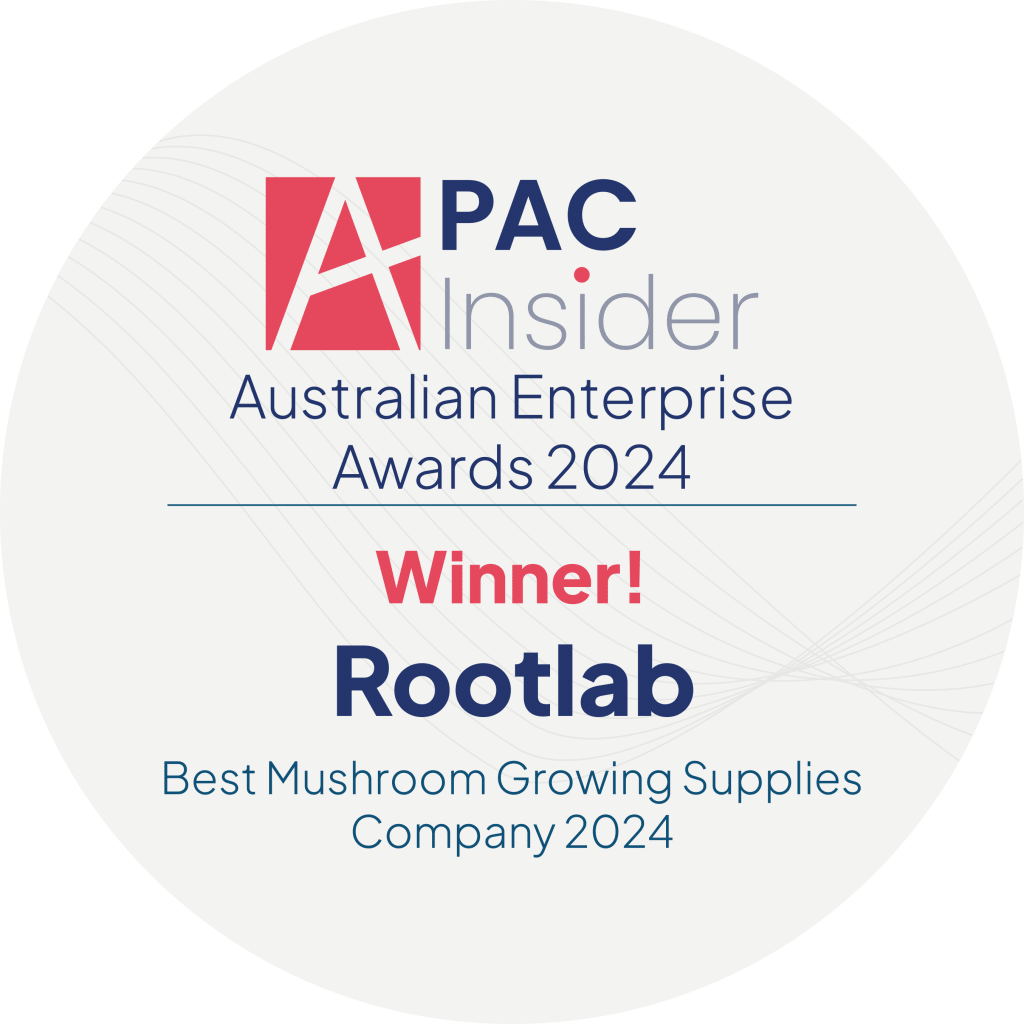Description
Potato Dextrose Agar (PDA) Plates
Potato dextrose agar (PDA) is a common culture medium used in microbiology laboratories for the cultivation and maintenance of fungi, particularly filamentous fungi and yeasts. It consists of mashed potatoes, dextrose (a type of sugar), and agar, which solidifies the medium to provide a solid surface for fungal growth.
Some fungi perform exceptionally well on PDA medium compared to other mediums like MYPA. Potato dextrose is much lighter in color than other mediums, making it easier to notice contamination while maintaining vigor.
Plate Shelf Life and Storage
The optimal shelf life for plates is 30-45 days. Order plates as needed, as they cannot be stored indefinitely, even in their original packaging. While most plates can last for months, their ideal shelf life is 30 days.
Usage and Contamination
Plates may remain usable beyond 30 days if uncontaminated. If contamination occurs in one plate, it doesn’t affect others in the pack. Discard contaminated plates and use the rest as normal.
Long-term Storage
Extended storage may cause plates to lose moisture, becoming stiff and papery. Use plates only if they remain gelatinous and uncontaminated. Discard any that become stiff or papery, as they can no longer support organism growth.
Refund Policy
For damaged or contaminated plates upon delivery:
• Contact us within 30 days of the ORDER date
• Provide photos for refund requests
• No replacements are offered; only refunds
Storage Guidelines
Before inoculation:
• Store in a cool, dry place (e.g., cupboard)
• Avoid refrigeration to prevent condensation
• Place upside down to minimize condensation
After colonization:
• Refrigerate when at least 60% colonized
• Label (date and species) and put in zip-lock bags for storage
• It is best to keep it in the vegetable compartment of the fridge
Remember: The packaging sleeve is not a sterile seal. Proper storage is crucial for maintaining plate quality.
Uses of PDA Plates in Microbiology:
- Isolation of Fungi: PDA plates provide a nutrient-rich environment suitable for the growth of a wide range of fungi. Microbiologists can streak or spread samples onto PDA plates to isolate individual fungal colonies for further study or identification.
- Fungal Identification: Fungi exhibit diverse morphological characteristics, such as colony color, texture, and growth pattern, which can be observed and recorded on PDA plates. These characteristics can aid in the identification of fungal species.
- Maintenance of Fungal Cultures: PDA plates can be used to maintain fungal cultures over time. Fungal strains can be stored on PDA plates at appropriate temperatures for future use or distribution to other laboratories.
- Study of Fungal Physiology and Metabolism: PDA plates can be used to study various aspects of fungal physiology, including growth rate, sporulation, and response to environmental conditions or antifungal agents.
Your Order Includes:
- 10 pre-poured, thick-poured PDA plates: Longer moisture retention for healthy mycelium growth.
- 10 Parafilm pre-cut strips: Ensure a secure and sterile seal for your cultures.
- Durable 90mm petri dishes: Clear polystyrene for easy observation, disposable, and anti-slip for stability.
- Long shelf life: Up to 30-45 days for extended cultivation potential.

